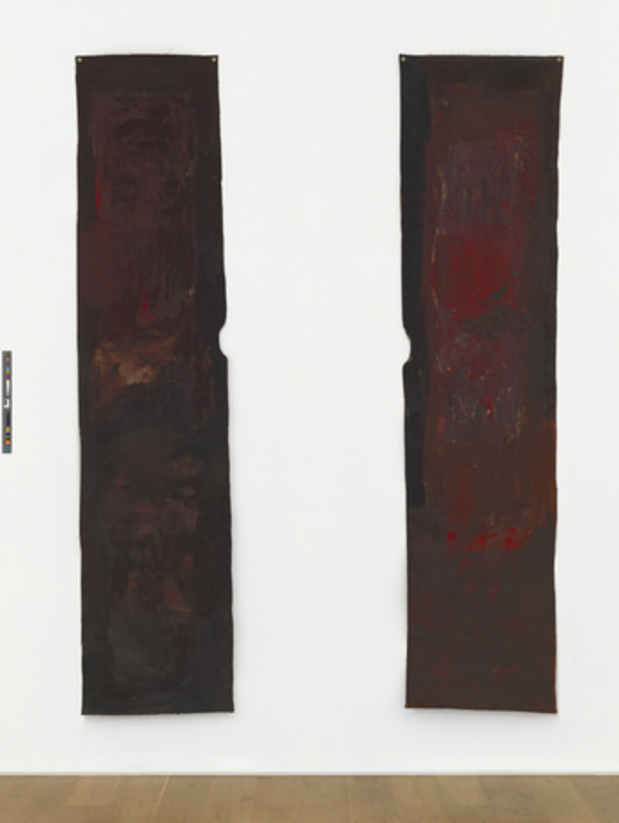Leon Golub “Riot”
Hauser & Wirth

This event has ended.
Hauser & Wirth presents the gallery’s inaugural exhibition devoted to renowned postwar American figurative painter Leon Golub. Spanning five decades and including a selection of paintings and late drawings, ‘Leon Golub. Riot’ surveys the late artist’s politically charged and profoundly affecting oeuvre. Golub’s work achieves the gravitas of great history painting, but asserts its modernity and relevance through its raw power of passionate protest. Golub grappled with sprawling themes of war, violence, injustice, oppression and the abuse of power while intimately engaging the human condition and probing into the realities of our shared experiences.
Following the artist’s highly acclaimed retrospective at the Serpentine Gallery in London, Hauser & Wirth hosts a panel discussion of Golub’s art and legacy with artist Martha Rosler; Hans Ulrich Obrist, Co-Director, Serpentine Galleries; and Samm Kunce of The Estate of Leon Golub.
‘Leon Golub. Riot’ opens with monumental canvases that fill the gallery’s ground floor and immerse visitors in the ferocity of the Golub’s mature art from the late 1960s to the 1990s. These paintings encapsulate the tenets of his practice and reveal the intense physical process through which Golub corporealized the painted surface. His ripe figuration – his unique ability to materialize flesh – supported his narratives, and allowed the artist to trace the political abuse of power to the body. In these paintings, Golub expresses a vision of life that is both highly personal and broadly existential.
Central to the exhibition are the canvases ‘Napalm I’ (1969) and ‘Riot V’ (1987), which bracket the two central mature decades of the Leon Golub’s fifty-year career.
Created between 1968 and 1969, the Napalm Series represents a pivotal moment when Golub’s subject matter shifted from the mythological to the societal, advancing its relevance and urgency in relation to contemporary life. These paintings are the first to reference the Vietnam War and are part of what Golub himself described as an ‘overt political effort’. Napalm was a substance commonly used during combat in this era; when ignited during attacks, it burned human flesh and wrought death. In ‘Napalm I’, Golub depicts the sheer vulnerability of the human body. Two figures are entangled in a red-stained landscape – as one fights to extricate himself, the other lies mortally wounded with an open, bloody chest. In a repetitive process that required weeks of demanding physical work, Golub dissolved his pigments, soaked the canvas in solvents, scraped away paint with a meat cleaver, and rendered surfaces as eviscerated, porous, and raw as the violence that a human body suffers in scenarios of duress and agony.
From the late 1970s through the mid-1980s, Golub would create his most celebrated works with the series ‘Mercenaries’, ‘Interrogations’, ‘White Squads’, and ‘Riots’. Depicting scenes of coercion, torture, terrorism, and urban unrest, these paintings portray the aggressors as men who perhaps are not so different from ourselves. In these years Golub focused upon power and its abuses, giving particular attention to American military activity in such places as Latin America. ‘Riot V’ (1987) portrays a psychologically charged scene, its action momentarily suspended before an eruption. A gang of male figures dominates the canvas; a few have already thrust their arms into the air while others, with shoulders hunched forward, appear ready to charge. A single figure stands steadfast and unwavering. His cold stare directly meets the viewer’s gaze, rendering the onlooker an unintentional accomplice. The impending actions stir tension, while the ambiguity of emotion poses a threat. The viewer is caught in a moment of anticipation, waiting to see if the riots will manifest in demonstration and protest or violent events.
The second floor galleries at Hauser & Wirth present Golub’s early works, revealing the artist’s interest in primitivism, classical antiquity, and mythology. Made in Paris, where Golub lived from 1959 to 1964, these works evidence the influence of Jean Dubuffet, but also reveal the profound effect of Golub’s postwar trip to Europe, where he first saw fragments of classical antiquities and was deeply impressed by battle scene friezes, such as those at the Parthenon, depicting primal struggle and violence. The gritty textures and brutally rendered forms in ‘Boxer I’ (1960) suggest the effects of violence upon a body. The tragic hero of Greco-Roman myth, the boxer is fated to doom and suffering – glorified for his endurance and courage but nonetheless a sacrificial figure committed to the timeless struggles and ritualized games of savagery and combat.
The exhibition also includes a selection of late drawings that Golub began in 2000 and continued to create through the last four year of his life. Intimate in scale, some of these works employ the technique of oil transfer, while others are rendered in ink and acrylic, and revisit earlier themes, referencing mythology, eroticism, and violence. The symbol of the sphinx returns in ‘Alerted’ (2003). Part man and part beast, the sphinx is an ideal metaphor for the struggles of humankind seeking both gratification and civilization. Sensual centaurs and satyrs also populate Golub’s late works, in which visitors also will find allegories of death and dry gallows humor.
Media
Schedule
from May 11, 2015 to June 20, 2015
Opening Reception on 2015-05-11 from 18:00 to 20:00